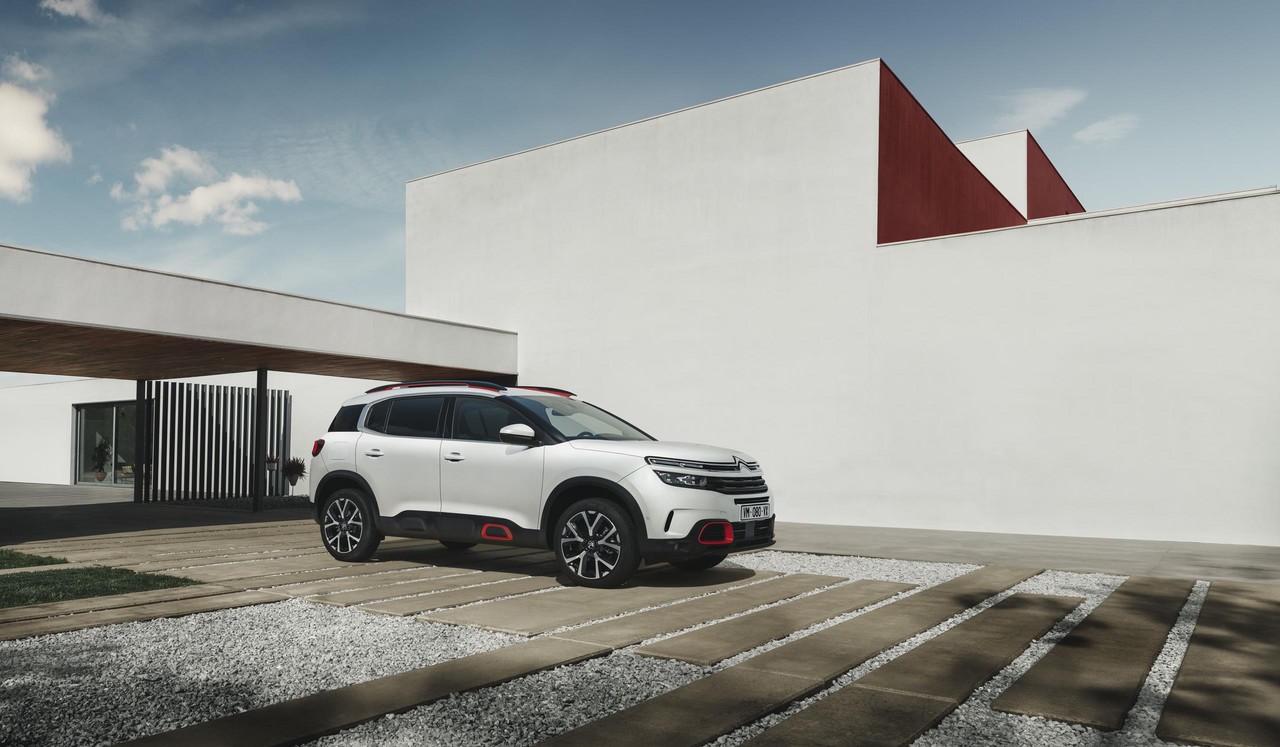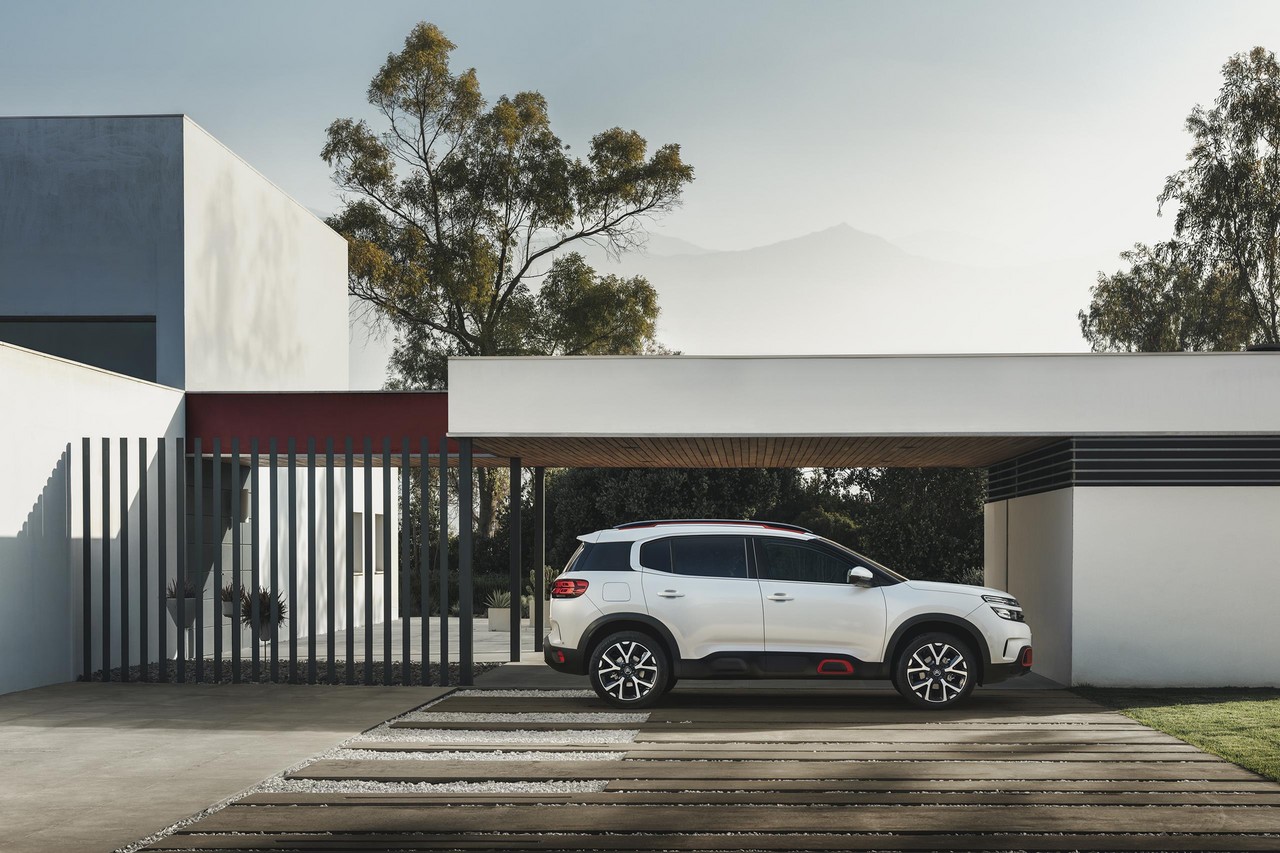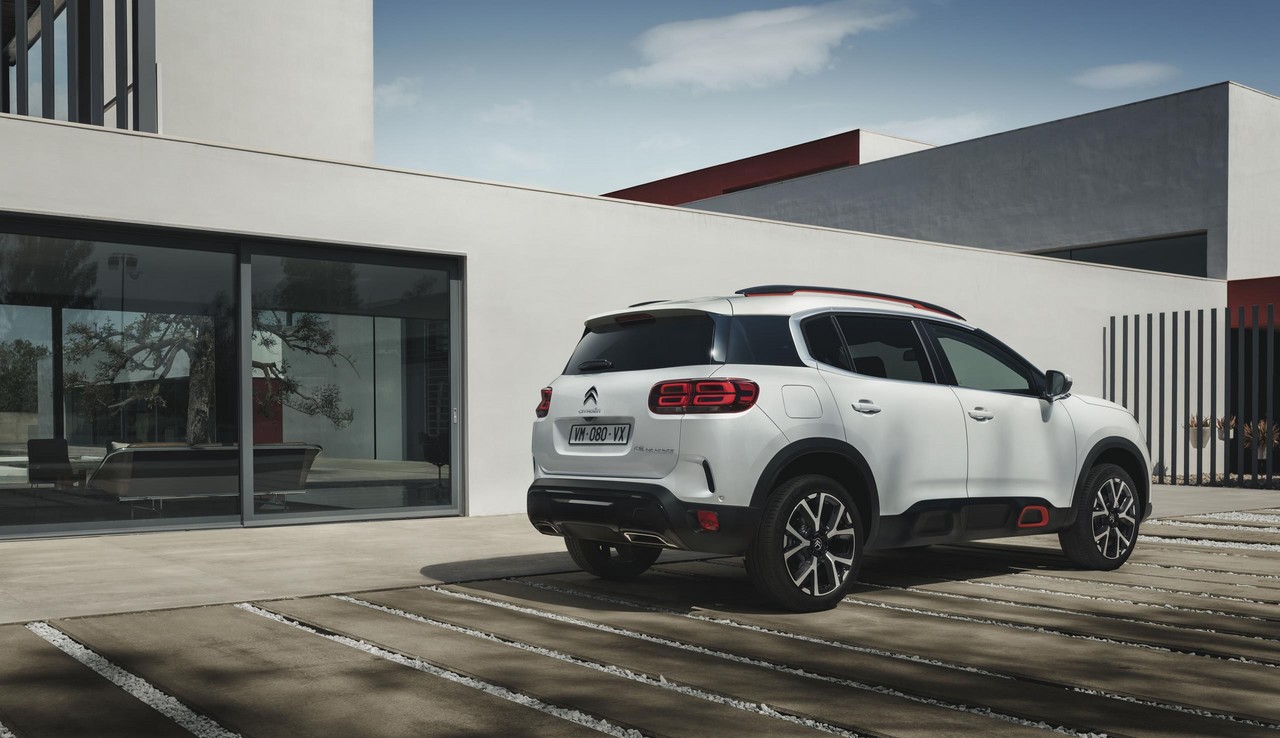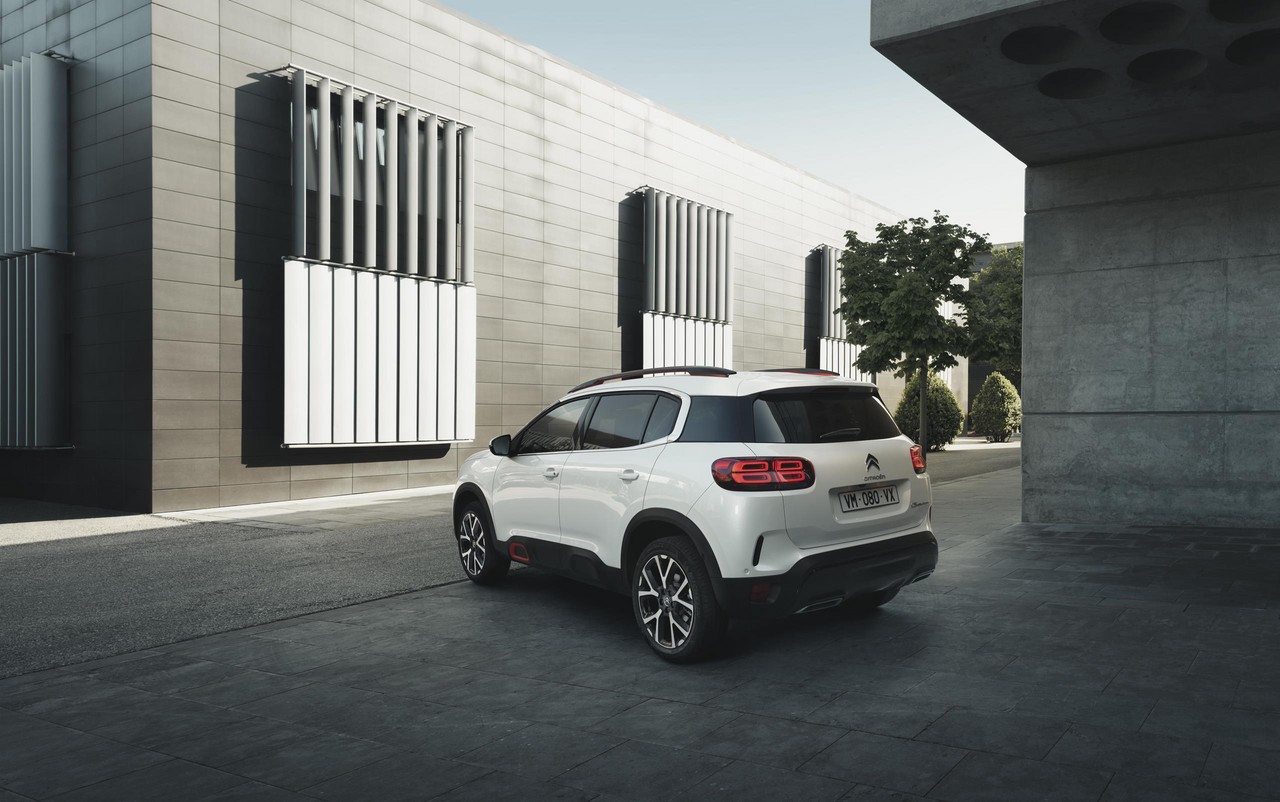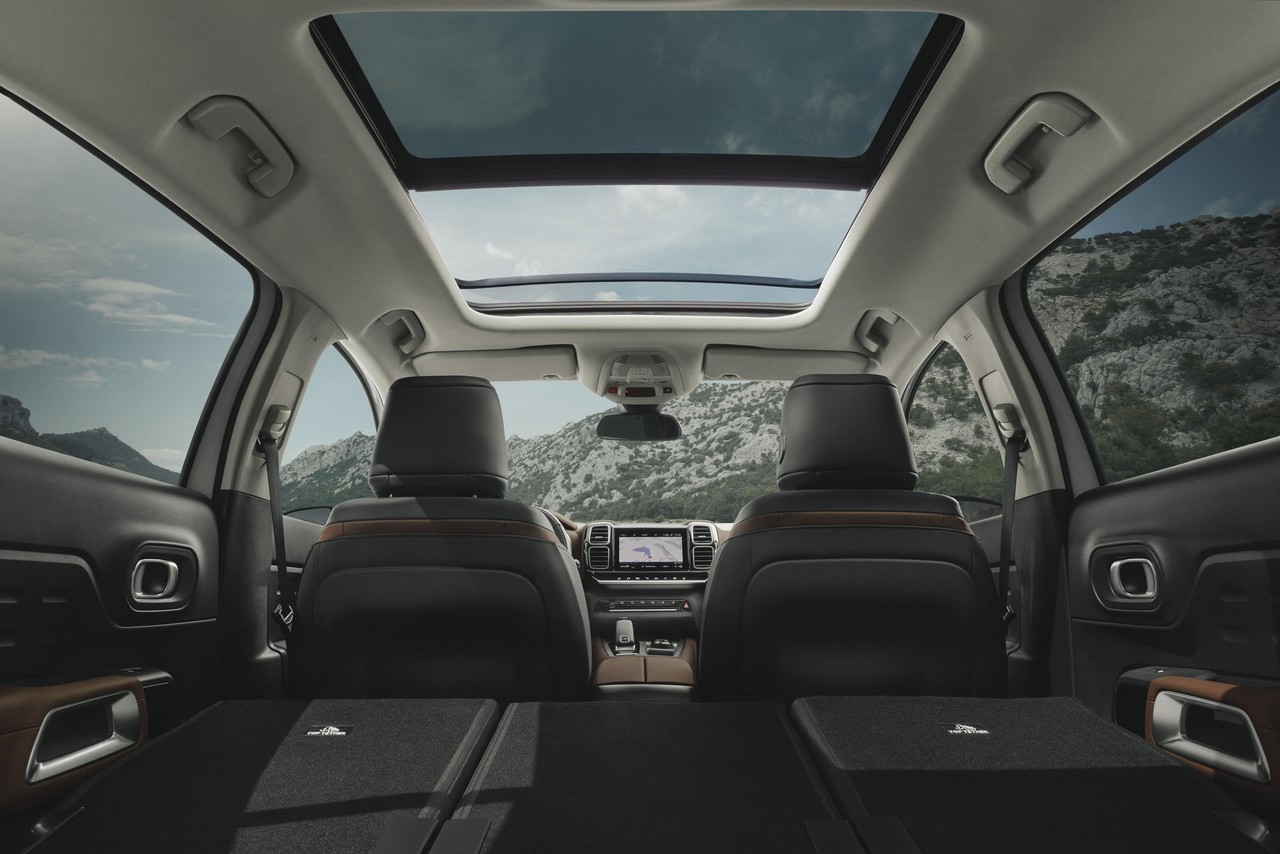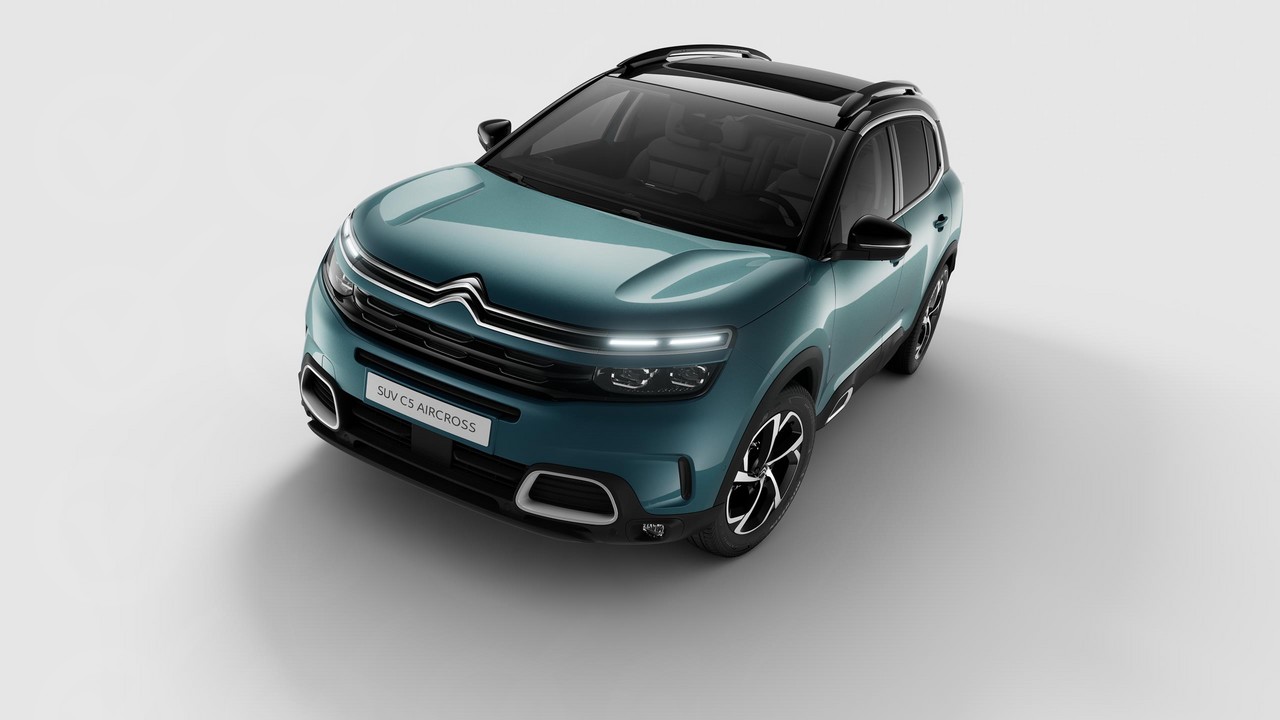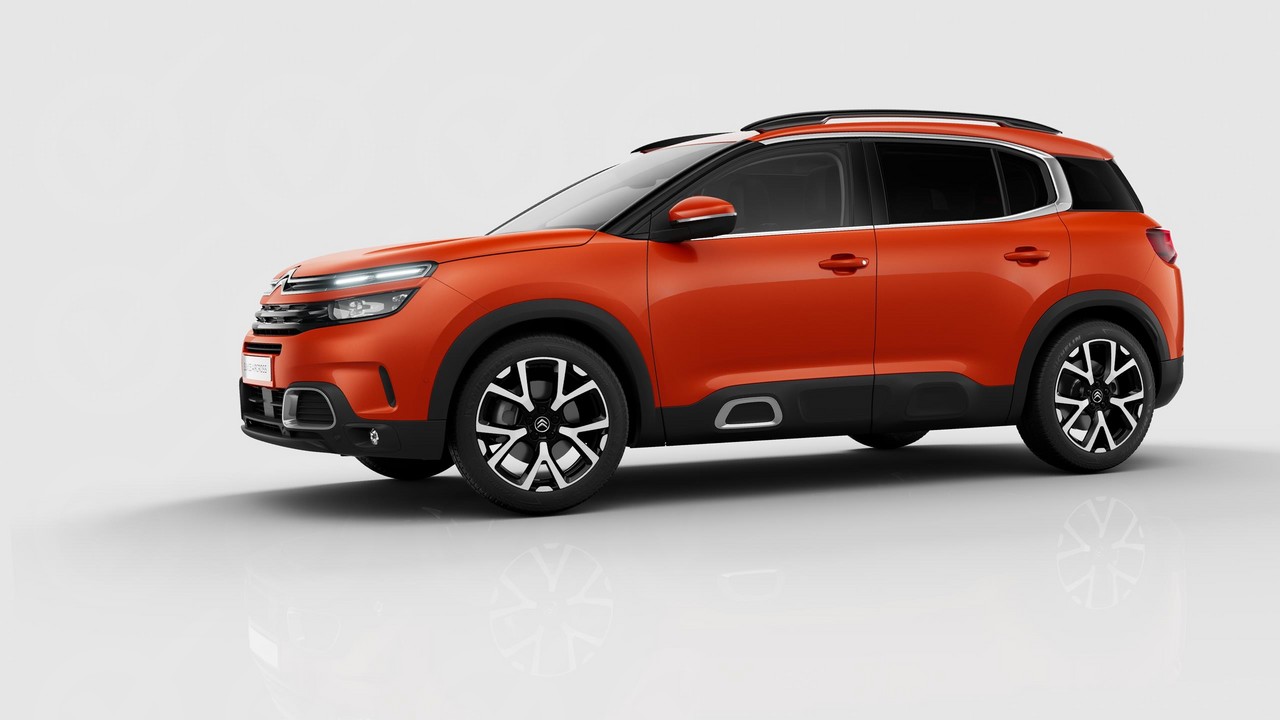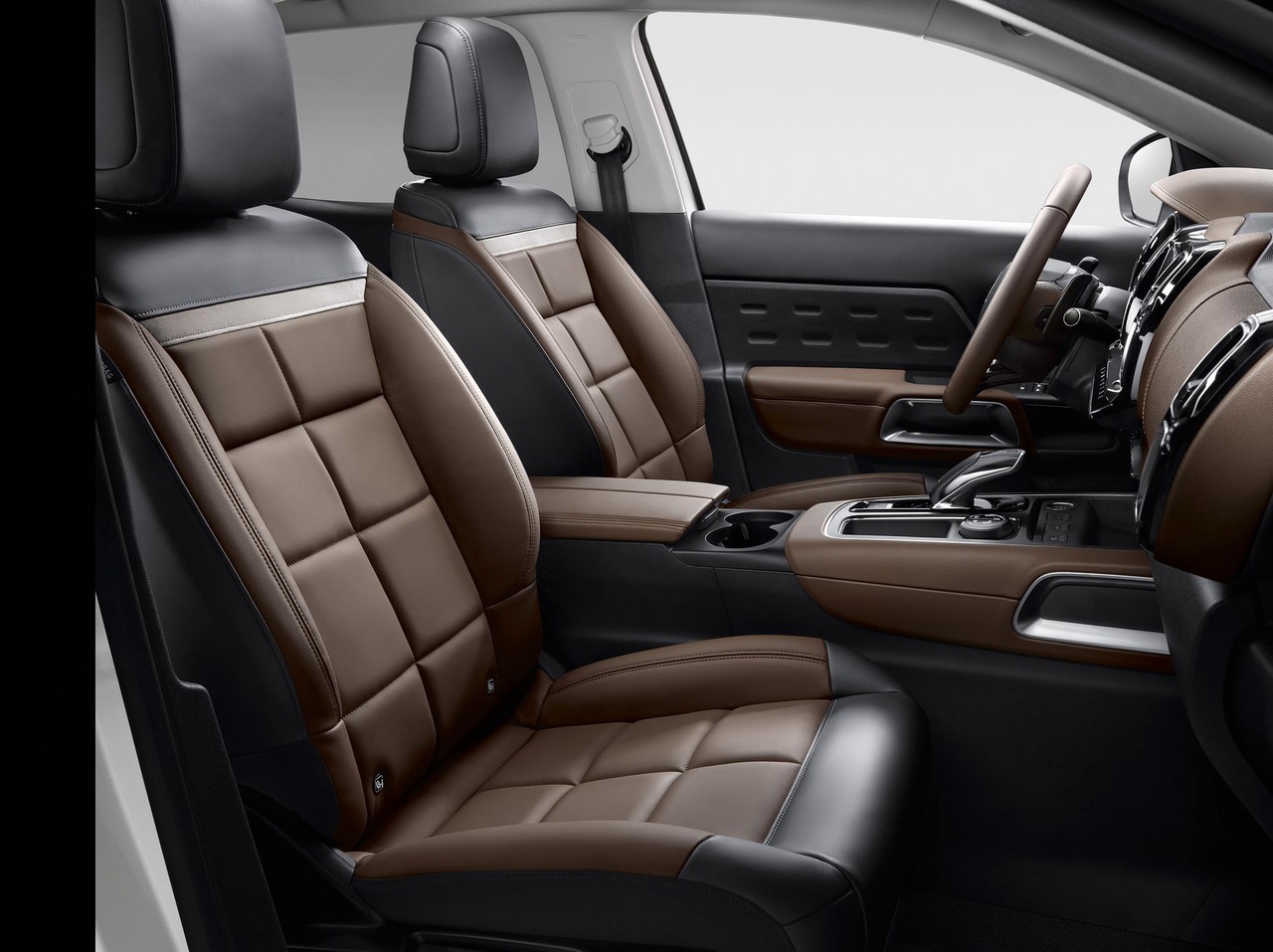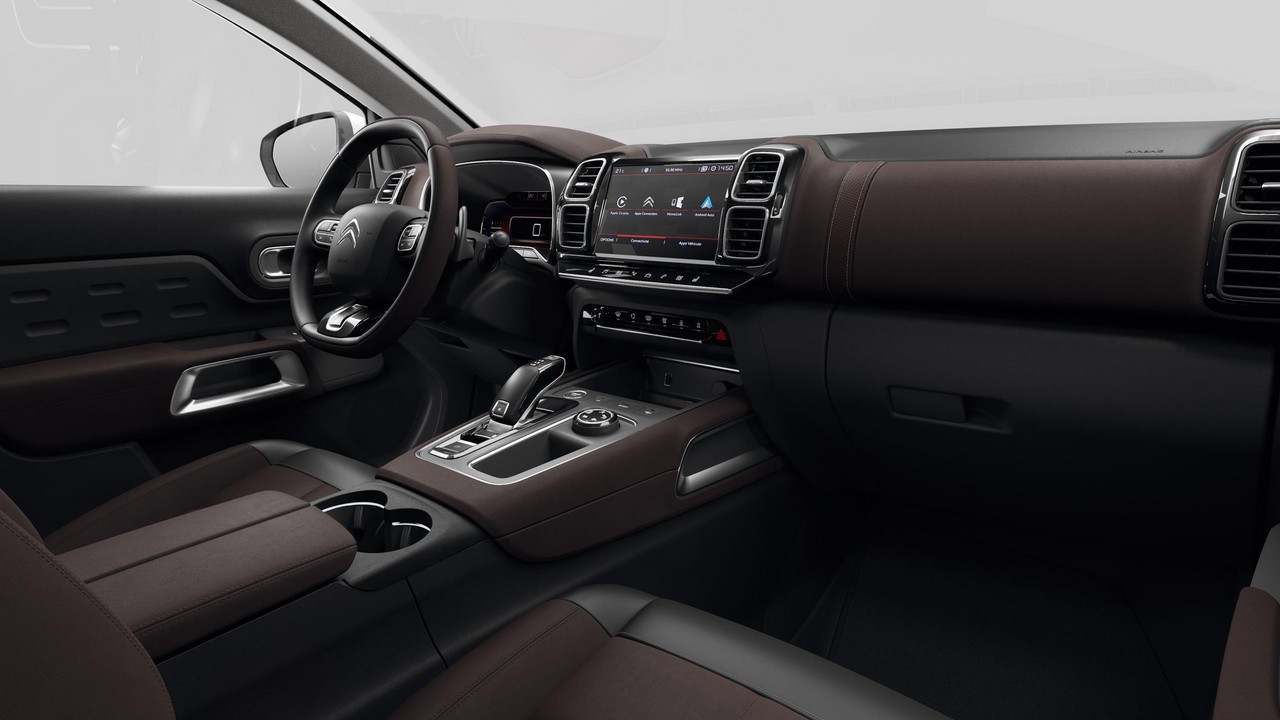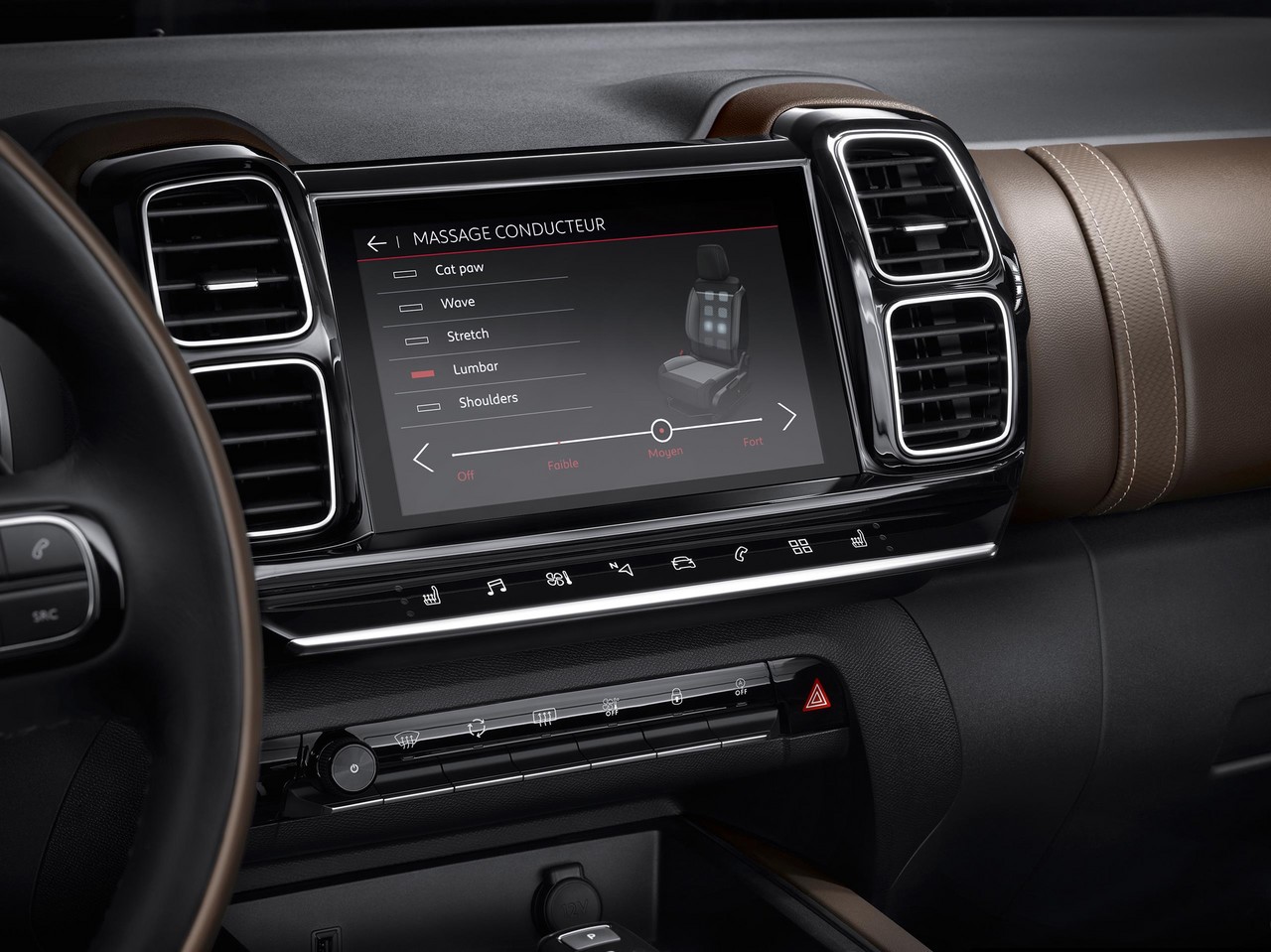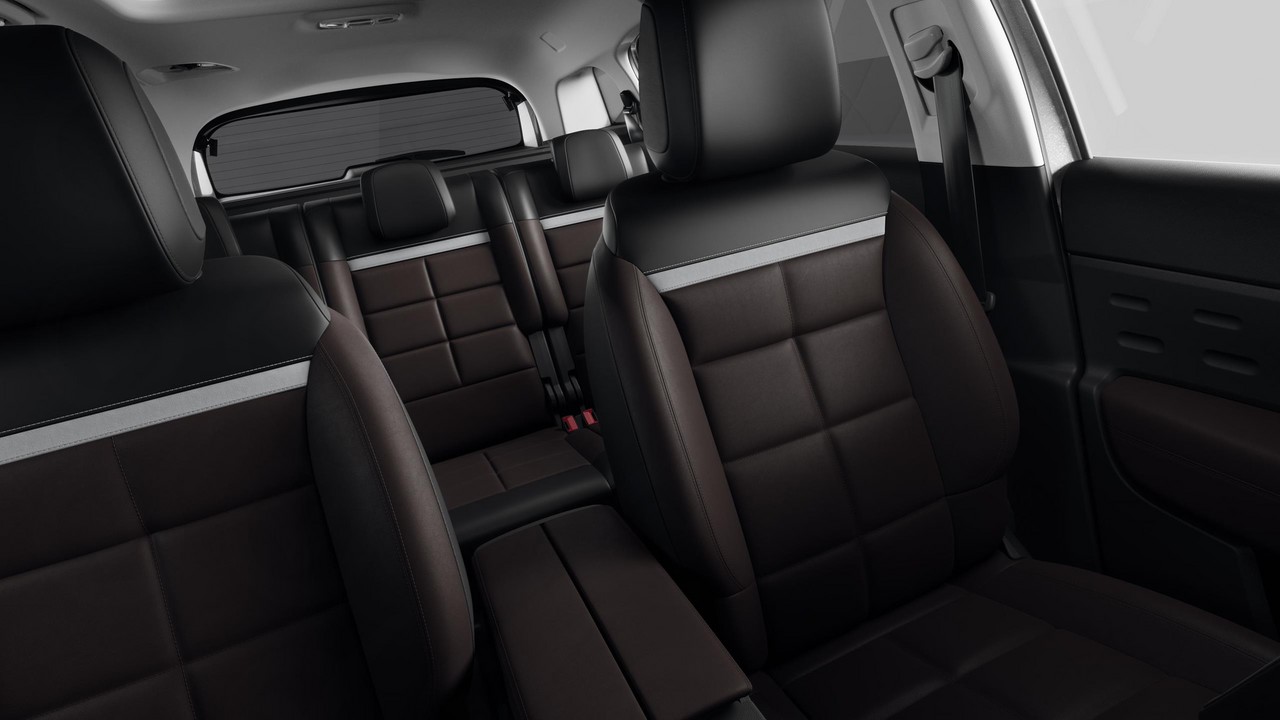
- ‘Advanced Comfort Seats’ are well padded and provide good support
- Spacious and versatile interior: three individual and removable rear seats
- Quiet, well-insulated cabin
- Ride is comfortable…
- … but Citroen’s patented ‘Progressive Hydraulic Cushions’ aren’t that impressive
- AEB only active at speeds up to 85 km/h
- Adaptive Cruise Control not offered
- Body roll when cornering
- Transmission can hesitate when kicking down
- Steering is overly assisted and vague
- Variable interior trim quality
- Infotainment system is laggy and difficult to operate when driving
Review: Citroën C5 Aircross (2019-24)
Overview
Released in Australia in July 2019, the Citroën C5 Aircross was a mid-size SUV. Manufactured in Rennes, France, the front-wheel drive Citroën C5 Aircross was powered by a 1.6-litre turbocharged petrol engine that was mated to a six-speed automatic transmission. Furthermore, the Citroën C5 Aircross was offered in Feel and Shine editions which had recommended retail prices of $39,990 and $43,990 upon their release.
Over the combined ADR 81/02 test cycle, fuel consumption for the Citroën C5 Aircross 1.6 THP was 7.9 litres per 100 km.
| Variant | Edition | Engine | Trans. | Peak power | Peak torque |
|---|---|---|---|---|---|
| 1.6 THP | Feel, Shine |
1598 cc turbo petrol I4 | 6sp auto | 121 kW at 6000 rpm | 240 Nm at 1400 rpm |
Body and dimensions
The Citroën C5 Aircross was based on PSA Group’s EMP2 platform which was shared with the Peugeot 3008 . To increase rigidity, structural parts of the vehicle were bonded using a discontinuous line of adhesive and an electrical weld was positioned wherever the line of adhesive was interrupted. According to Citroën, this bonding technique:
- Improved body stiffness by, on average, around 20 per cent;
- Did not add to body weight; and,
- Prevented toxic smokes generated by conventional bonding welds.
Compared to the Peugeot 3008 , the Citroën C5 Aircross was 53 mm longer (at 4500 mm), 33 mm wider (1850 mm), 64 mm taller (1688 mm) and had a 55 mm longer wheelbase (2730 mm); ground clearance was 230 mm. Furthermore, the C5 Aircross 1.6 THP had an unladen weight of 1402 kg.
Inside, the Citroën C5 Aircross had three individual, equal-width rear seats which could slide, recline (from 19 degrees to 26.5 degrees), fold down for a flat load area or be removed entirely. Furthermore, the C5 Aircross had a luggage capacity of 580 litres, though this increased to 720 litres when the sliding second-row seats were moved to their most forward position and 1630 litres when the second row seats were folded down and luggage was filled to the roofline.
Suspension and Progressive Hydraulic Cushions
The Citroën C5 Aircross had MacPherson strut front suspension and a torsion beam rear axle. The suspension for the C5 Aircross featured Citroën’s ‘Progressive Hydraulic Cushions’ (PHC) which used a hydraulic stop at each end of the shock absorber (one for compression and one for rebound) in place of a conventional rubber bump stop. During major impacts, the hydraulic stops slowed shock absorber and spring movement to avoid abrupt compression or decompression actions by absorbing and dissipating energy.
Safety equipment
Standard safety equipment for the Citroën C5 Aircross included dual front airbags, front seat-mounted side airbags, full-length curtain airbags, ABS, electronic brake force distribution, brake assist, electronic stability control, traction control and front seatbelts with pre-tensioners and load limiters.
As standard, the Citroën C5 Aircross was equipped with the following active safety technologies –
- Forward Collision Warning and Active Safety Brake: used a multifunction camera and 24 GHz radar sensor to detect obstacles, vehicles or pedestrians. Operating at speeds above 30 km/h, Forward Collision Warning (also known as Distance Alert) initially issued an amber visual alert if there was a potential collision hazard. In its second stage, a red visual alert and an audible warning would indicate if a collision was imminent. Operating at speeds up to 85 km/h, Active Safety Brake would initiate autonomous emergency braking if the driver failed to react;
- Active Blind Spot Monitoring: operating at speeds above 13 km/h, Active Blind Spot Monitoring used lateral ultrasound sensors to detect a vehicle or bicycle in the driver’s blindspot. If detected, an LED would illuminate in either side door mirror. Furthermore, if the driver attempted to change lanes when an object was detected, the Active Lane Keeping Assistance function would apply steering wheel torque to correct the driver’s trajectory;
- Lane Departure Warning: monitored lane markings and warns the driver if a making was accidentally crossed. If steering deviation was detected, the driver would be alerted by a flashing indicator on the digital instrument panel and an audible signal in the cabin;
- Active Lane Keeping Assistance: operating at speeds above 64 km/h, Active Lane Keeping Assistance applied steering wheel torque to correct the vehicle’s course when a potential lane change was detected without the indicators having been activated. If the driver wanted to maintain the direction of the vehicle, they could prevent the correction by keeping a firm hold on the steering wheel;
- Driver Attention Alert: active at speeds above 65 km/h, Driver Attention Alert used the windscreen-mounted camera to identify ‘trajectory anomalies in relation to road markings’. If more than three anomalies were detected, the system would recommend that the driver take a break; and,
- Speed Limit Recognition and Recommendation: used the windscreen-mounted camera to recognise speed signs and displayed the information on the instrument panel. Furthermore, the speed could be recorded as an instruction for the speed limiter / cruise control in one simple movement.
The C5 Aircross was also equipped with Citroën’s ‘Grip Control’ traction control system which controlled drive torque at each of the front wheels and enabled the driver to select from five driving modes via a rotary dial on the dashboard.
Euro NCAP testing
In Euro NCAP testing, the Citroën C5 Aircross was given different rating according to whether it was fitted an optional safety pack. Without the safety pack , the Citroën C5 Aircross received a four star safety rating which included an 87 per cent adult occupant protection rating, an 86 per cent child occupant protection rating and a 75 per cent safety assist rating. With the safety pack , the Citroën C5 Aircross received a five star safety rating which included an 89 per cent adult occupant protection rating, an 86 per cent child occupant protection rating and an 82 per cent safety assist rating.
Wheels, tyres and brakes
The Citroën C5 Aircross Feel had 18-inch ‘Swirl’ diamond cut alloy wheels with 235/55 R18 tyres. The C5 Aircross Shine, however, had 19-inch ‘Art’ diamond cut alloy wheels with 205/55 R19 tyres.
The Citroën C5 Aircross 1.6 THP had 304 mm by 28 mm ventilated front brake discs with single piston sliding calipers and 290 mm by 12 mm solid rear discs with single piston sliding calipers.
Features: Citro�n C5 Aircross Feel
As standard, the Citroën C5 Aircross had an 8.0-inch capacitive touchscreen, satellite navigation, digital radio tuner (DAB+), Bluetooth mobile phone connectivity, smartphone integration (Apple CarPlay, Android Auto and Mirrorlink), two USB sockets, voice recognition and two 12 volt power sockets (dashboard and load area). The C5 Aircross also had a 12.3-inch TFT digital instrument display.
Beyond this, standard features for the Citroën C5 Aircross Feel included ‘Silica’ grey cloth seat trim, cruise control, dual-zone climate control air conditioning, halogen headlights with static cornering lights, halogen fog lights, daytime LED running lights, dusk-sensing headlights, rain-sensing wipers, a leather steering wheel, remote central locking with proximity key, power adjustable door mirrors with folding function, power windows, a power adjustable steering wheel for rake and reach), an electrochrome (auto dimming) rear view mirror, push-button start, a power-operated tailgate with gesture control (i.e. foot operation), rear privacy glass, an electric parking brake, mood lighting, a trip computer and immobilizer.
The Citroen C5 Aircross was also equipped with Citroën’s ‘Magic Wash’ system which integrated windscreen washer nozzles into the tips of the wipers. When the driver activated the windscreen washing function, a small quantity of fluid was deposited over the length of the wiper blade.
Features: Citro�n C5 Aircross Shine
The Citroën C5 Aircross Shine was further equipped with ‘Advanced Comfort’ seats which had power adjustment and used several layers of materials such as polyurethane foam, viscoelastic or textured foam. According to Citroën, these ‘memory seats’ adapted to the body shape of each passenger yet regained their original shape from one passenger to the next.
The Citroën C5 Aircross Shine was also equipped with combination leather and fabric-covered seats, wireless mobile phone charging, laminated windows and windscreen (the ‘Acoustic glass’ package), and aluminium pedals.
Specifications
